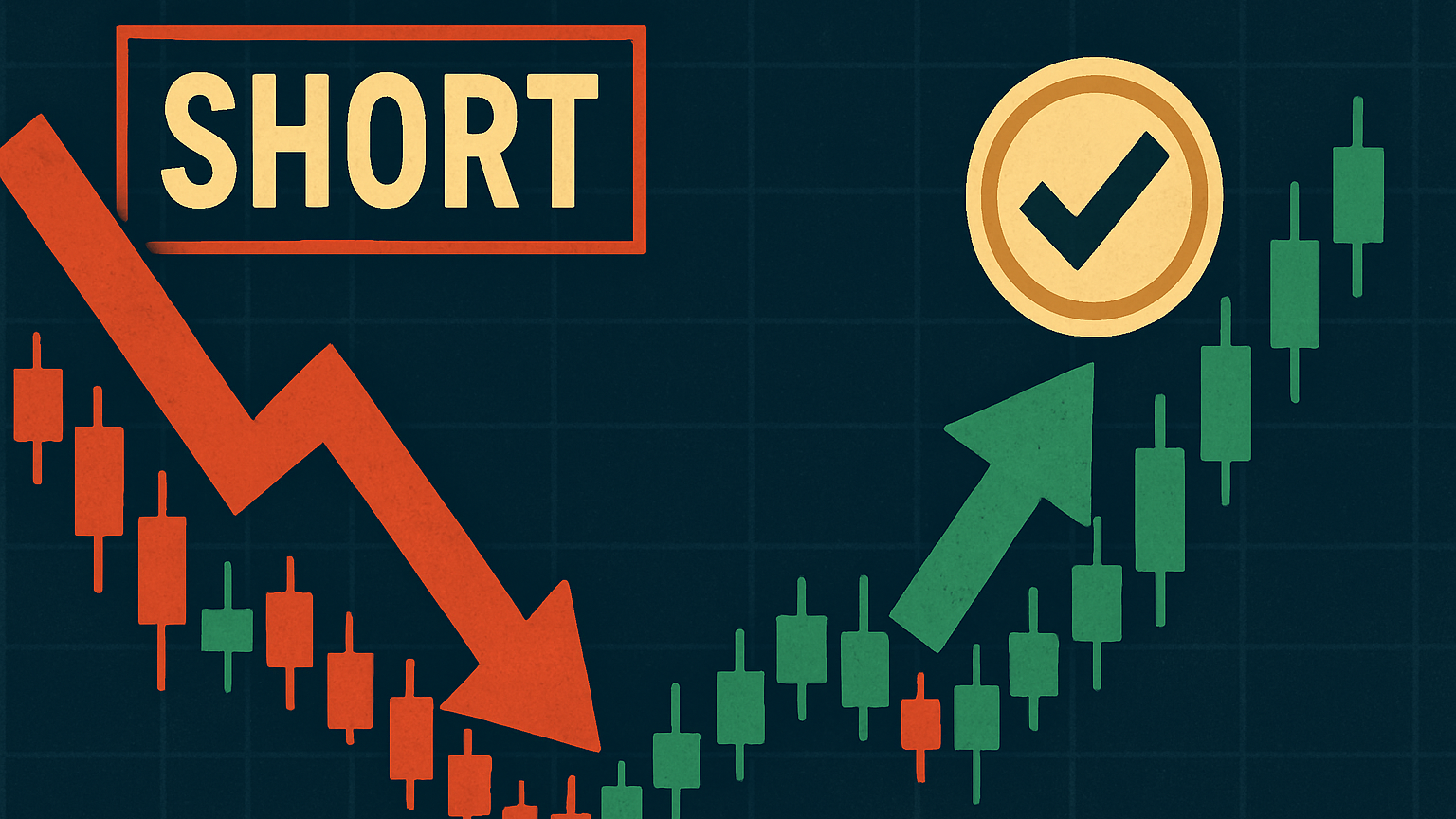Learn essential risk management strategies for trading trend reversals, including effective tools and techniques to protect your capital.
Trading trend reversals can be highly profitable, but they also come with significant risks. Without proper risk management, you could face steep losses. Here’s what you need to know upfront:
- Why Risk Management Matters: Trend reversals bring unpredictable price swings and false signals, making disciplined strategies essential.
- Key Tools: Use indicators like Moving Averages, RSI, and MACD to identify reversals. Adding confluece from tools like LuxAlgo provide real-time insights and minimize false signals.
- Risk Management Strategies:
- Use stop-loss orders effectively to protect capital.
- Limit position sizes to 1-2% of your trading account.
- Aim for risk-reward ratios of 1:2 or higher.
- Avoid emotional trading by relying on predefined rules and technical analysis.
Quick Tip: Combining multiple indicators and tools like LuxAlgo can improve accuracy and help you act decisively during reversals. Stay disciplined, manage your risk, and focus on long-term success.
What You Need to Know About Trend Reversals
Defining Trend Reversals
Trend reversals indicate a major shift in market momentum, marking a change from an uptrend to a downtrend - or vice versa [1]. However, reversals often produce misleading signals, making it crucial to separate real changes from market noise.
Reversals typically happen in three stages:
- Initial signal
- Confirmation
- Trend establishment [2]
By understanding these stages, traders can better identify true reversals and fine-tune their risk management strategies.
Causes of Trend Reversals
Several factors can trigger trend reversals, including economic events, changes in market sentiment, and technical signals. Each of these plays a distinct role in how trends develop and shift.
| Trigger Type | Description | Impact on Trading |
|---|---|---|
| Economic Events | Major events like rate changes | Sudden price movements |
| Market Sentiment | Shifts in investor confidence | Gradual trend adjustments |
| Technical Conditions | Signals like overbought/oversold | Early warning signs |
Challenges in Spotting Reversals
Identifying real trend reversals can be tricky due to false signals, market noise, and emotional decisions during volatile periods. Misjudging a pullback as a reversal or relying too heavily on a single indicator often leads to mistakes.
Some common pitfalls include:
- Confusing pullbacks with actual reversals
- Over-relying on one indicator
- Ignoring the larger market picture
- Letting emotions guide decisions in volatile markets
To tackle these challenges, experienced traders use multiple technical indicators like moving averages, RSI, and MACD for confirmation. This approach helps filter out false signals and supports more accurate decision-making [1].
Combining technical analysis with strong risk management strategies is essential. This balance not only protects trading capital but also ensures traders are ready to act on legitimate reversal opportunities. The next section will dive deeper into the tools and strategies that make this possible.
Tools and Indicators for Spotting Trend Reversals
Common Indicators for Trend Reversals
Technical indicators play a key role in identifying when trends might change direction:
- Moving Averages (MA): When a short-term MA crosses above or below a long-term MA, it can signal a trend shift. For instance, the 50-day MA crossing the 200-day MA is often seen as a strong signal of a potential trend reversal.
- Relative Strength Index (RSI): This oscillator ranges from 0 to 100. An RSI above 70 suggests an overbought condition (possible downward reversal), while below 30 indicates oversold conditions (potential upward reversal).
- Moving Average Convergence Divergence (MACD): A crossover between the MACD line and the signal line, especially when paired with price divergence, often hints at a possible reversal.
Combining Indicators for Better Results
Using multiple indicators together helps reduce false signals and gives a clearer picture. Here are some effective combinations:
| Indicator Combination | Purpose | Signal Strength |
|---|---|---|
| RSI + MACD | Confirms momentum shifts | Strong when both show divergence |
| Moving Averages + RSI | Validates trend changes | High when MA crossover aligns with RSI signals |
| Candlestick Patterns + MACD | Confirms price action | Most reliable with multiple timeframe alignment |
LuxAlgo Indicators for Reversal Detection

LuxAlgo offers advanced tools like the Price Action Concepts and Oscillator Matrix to help traders detect trend reversals with greater precision. These tools are designed to minimize false signals and provide actionable insights.
Key features include:
- Signal Quality Assessment: By analyzing market conditions, LuxAlgo rates the strength of reversal signals, helping traders focus on high-confidence opportunities.
- Custom Alert System: Traders can set personalized alerts for specific reversal patterns across various timeframes.
- Real-time Analysis: Integrated with TradingView, LuxAlgo provides real-time updates, enabling traders to act swiftly and manage risk more effectively.
With these tools and strategies, traders are better equipped to navigate trend reversals while managing risk.
Strategies for Managing Risk in Trend Reversal Trading
Using Stop-Loss Orders Effectively
Stop-loss orders are essential for protecting your capital during trend reversals. To minimize losses while avoiding early exits, set your stops just beyond key support or resistance levels. For long trades, place the stop 1-2% below the support level. For short trades, position it slightly above resistance.
You can also use trailing stops tied to technical indicators for added flexibility. For example, an 8-period exponential moving average can serve as a dynamic trailing stop, locking in profits as the trend moves in your favor. This approach adjusts your exit point automatically based on market changes.
Calculating Position Size and Risk-Reward Ratios
Proper position sizing is a cornerstone of risk management. Here's a quick breakdown:
| Risk Management Component | Recommended Range | Purpose |
|---|---|---|
| Position Size per Trade | 1-2% of capital | Keeps losses manageable |
| Risk-Reward Ratio | At least 1:2 or 1:3 | Ensures profitability even with lower win rates |
| Maximum Portfolio Risk | 5-6% total exposure | Protects overall portfolio health |
When the market becomes highly volatile, consider reducing your position size by 25-50% to maintain consistent risk levels.
Avoiding Emotional Trading
Staying objective is critical in trend reversal trading. Here are a few ways to keep emotions in check:
- Set clear entry and exit rules, and use automated tools like LuxAlgo's alert system to avoid impulsive decisions.
- Rely on technical indicators for confirmation. Tools like LuxAlgo provide data-driven signals tailored to specific criteria.
- Keep a detailed trading journal to identify behavioral patterns and emotional triggers that may impact your decisions.
"By identifying potential reversal points and taking positions opposite to the prevailing trend, traders can gain from temporary price movements, thus mitigating losses or even turning a gain during market reversals." - easyMarkets [1]
Patience and discipline are key to successful trend reversal trading. Combining these strategies with tools like LuxAlgo's indicators can help you maintain a clear, objective approach while managing risk effectively.
Advanced Tools for Better Trend Reversal Analysis
LuxAlgo's Tools for Trend Reversal Analysis
Spotting trend reversals can be tricky, but advanced tools make it easier to break down complex data. LuxAlgo's Pro Toolkits are specifically built to help with this. For instance, the Price Action Toolkit focuses on identifying key reversal patterns and pinpointing support/resistance levels. Meanwhile, the Volume Analysis tools give a clearer view of trend strength by analyzing trading volume.
Another standout is the AI Backtesting Assistant, which dives into historical data to uncover patterns that reliably signal reversals. This tool helps refine strategies based on real-world performance.
| Tool Category | Key Features | Risk Management Benefits |
|---|---|---|
| Price Action Toolkit | Pattern recognition, Support/Resistance | Early reversal detection, precise timing |
| Volume Analysis | Volume profile, Trading activity metrics | Confirms trend strength, filters false signals |
| AI Backtesting | Historical data analysis, Strategy tweaks | Data-backed decisions, less emotional trading |
Using LuxAlgo with TradingView

LuxAlgo integrates seamlessly with TradingView, making trend reversal analysis even smoother. Customizable alerts notify traders when specific technical conditions suggest a potential reversal. Plus, the platform's screener feature scans thousands of assets to highlight the most promising setups, saving time and effort.
Automation and AI in Trading
AI tools bring a major advantage to trend reversal analysis by detecting opportunities early. Automation ensures trades are executed consistently, monitors multiple markets simultaneously, and removes emotional influences from decision-making.
When paired with disciplined strategies, AI and automation not only improve execution but also strengthen risk management by relying on data-driven insights. This combination empowers traders to handle the challenges of trend reversals with greater confidence.
Case Studies: Applying Risk Management in Trend Reversals
Looking at real-world examples can show how traders effectively manage risks during trend reversals.
Examples of Successful Trend Reversal Trades
A forex market case study highlights how a trader navigated an EUR/USD trend reversal using a structured approach. By combining technical analysis with risk controls, they achieved a positive outcome:
| Risk Management Component | Implementation | Outcome |
|---|---|---|
| Position Sizing | 1% capital risk limit | Safeguarded trading capital |
| Stop-Loss Placement | Below key support levels | Limited potential losses |
| Technical Analysis | Used price and volume signals | Improved entry timing |
| Risk-Reward Ratio | Minimum 1:3 ratio | Secured profitable trade |
This trade was successful due to strict discipline, the use of multiple confirmation signals, and sticking to predefined rules.
Learning from Failed Trend Reversal Trades
Mistakes can teach valuable lessons to improve risk management:
- Over-leveraging in Volatile Markets: A Bitcoin trader kept standard position sizes during high volatility, causing their stop-loss to trigger too early. Takeaway: Adjust position sizes and risk settings in volatile conditions.
- Single Timeframe Analysis: Focusing only on short-term signals led to missed larger trend structures and poor trade timing. Takeaway: Use multiple timeframes to confirm trend reversals.
Key Adjustments:
- Scale position sizes to match market conditions.
- Set stop-loss levels that account for normal market fluctuations.
- Use multiple timeframes to validate reversal signals.
- Time entries around major support and resistance zones.
Conclusion: Mastering Risk Management in Trend Reversals
Trading trend reversals successfully requires a mix of technical analysis, disciplined risk control, and the right tools. This guide has shown how careful risk management safeguards your capital while aiming for higher returns during market shifts.
Key Elements for Success
Effective trend reversal trading rests on combining smart position sizing with strong technical analysis. Tools like LuxAlgo add value by offering AI-driven insights that help filter out false signals and improve timing. As Blueberry Markets puts it:
"Failing to protect against market reversals can lead to devastating consequences for traders, including significant losses, emotional distress, and erosion of trading capital" [3].
Blending Technology with Discipline
Modern trading requires merging time-tested risk management strategies with cutting-edge tools. This combination allows traders to:
| Component | Benefit for Traders |
|---|---|
| Data-Driven Analysis | Enables objective decisions |
| Automated Monitoring | Ensures consistent execution |
| Risk Controls | Preserves trading capital |
Looking Ahead
AI and automation are reshaping trend reversal trading by delivering quicker, more accurate insights while maintaining strict risk boundaries. By pairing these tools with disciplined strategies, traders can better handle market challenges and protect their investments.
Long-term success in trend reversal trading hinges on balancing technology with robust risk management. Whether you're relying on basic indicators or advanced AI systems, safeguarding your capital through disciplined practices is always the top priority.
FAQs
What is the 1% rule in trading?
The 1% rule is a widely-used risk management guideline in trading. It suggests risking no more than 1% of your total account balance on a single trade. This approach helps protect your capital, especially during unpredictable market swings.
Here’s an example of how the 1% rule works:
| Account Size | Maximum Risk Per Trade (1%) | Example Stop Loss | Maximum Position Size |
|---|---|---|---|
| $10,000 | $100 | $0.50 per share | 200 shares |
| $50,000 | $500 | $0.50 per share | 1,000 shares |
| $100,000 | $1,000 | $0.50 per share | 2,000 shares |
This strategy offers several key benefits:
- Preserves Capital: Keeps losses small, even during losing streaks.
- Reduces Emotional Decisions: Smaller risks help traders stay calm and focused.
- Supports Long-Term Success: Conservative risk levels allow traders to remain active in the market.
The 1% rule works well alongside other risk management tools, like stop-loss orders and careful position sizing. When paired with technical analysis, it forms a solid foundation for handling risk during trend reversals.







